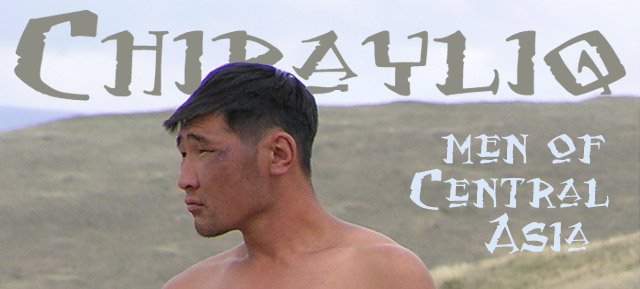Once upon a time, I collected old National Geographics for my source library. For fun, I checked them for any Chirayliq material. Surely they - from 1963 to 1999 - would yield some treasures.
Of course, it wasn't so easy. Western ethnographers don't usually pay much attention to handsome men between 18 and 38, regardless what tribe or nation they might be photographing. The "normal" targets for National Geographic photoshoots are old, wizened grandpas, beautiful women, and children of both sexes. Thus, my chirayliq collection consists of two teenage boys, two men well into their middle age, and only a single one of our own age group.
The Sami boy at the top, Nils Johan Mienna (15 years old in 1977) represents the western edge of our dear Eurasian landmass. Reindeer herders inhabit the continent's rim all the way from Norway to East Siberia. I wonder if Nils wanted to continue his parents' traditions, or if he pursued other dreams. Typical of 1970's National Geographic, the article makes a big deal out of the demands of "modern" life and suggests that reindeer herding will be lost for the sake of efficiency.
From National Geographic's April issue, 1985, comes this portrait of an anonymous Afghani boy. He is described as a militiaman in a village near "Communist Kabul". The writer lets us know that the Marxist government conscripts 16-year-olds, and that the army is plagued by desertions. While Coca Cola continued to flow in the capital, the surrounding mujaheddin were dealing another kind of opium for the people. I wonder what happened to this young man.
Towards the heart of the continent: A Kyrgyz herdsman reminds a French couple of his ancestor, Genghis Khan, on their way through the Wakhan corridor in 1972. It is not made clear if he is identical to their guide, Abdul Wakil, a man of few words and fewer smiles, but with unerring survival experience. Of course, the travellers respect Abdul, their life depends on him, but they also suggest that he doesn't understand how a jeep could be more valuable than 14 of his beloved camels.
13 years later, another "descendant of the Khan" greets the National Geographic reporters with a Mona Lisa smile. Of course, the article is titled "Time Catches Up With Mongolia". There is nothing more reassuring for the Western reporters than the good old contrast between the backward but oh-so-authentic East, and the up-to-date but boringly normal West. Is modernization through sovietizised city slickers of Ulan Bator more wrong than Coca Cola in Kabul?
The final photo is from an article from 1968, "In the Footsteps of Alexander the Great". A Turkish oil wrestling contest takes place amid the ruins of Ephesus. Here, back in the Western end of Eurasia, Turks act out the roles of ancient Greeks and Macedonians in the imagination of the reporter.

Oh no, you make me want to go through my National Geographics, too ...
ReplyDeleteDear Ainur ja Tiret!
ReplyDeleteI study Ethnography and will write my thesis about a Saami people. I find this NG article very interesting, but I cannot find the magazine itself. Could you help me?
Dear Brigi, sorry for not replying earlier. National Geographic magazines should be available at major libraries - why don't you ask your local librarian if they can help you order a certain issue.
ReplyDeleteAsk for the September 1977 issue, Vol. 152, Number 3. I don't know where you live, but this is a basic service provided by public libraries.
LOL, you're 5 months late, Ainur ...
ReplyDelete